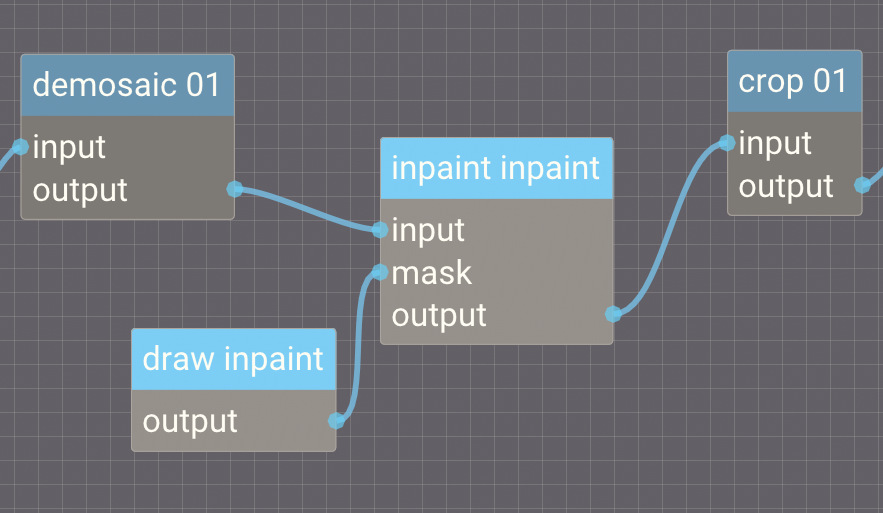how to manage presets
in a way, presets are a simplified version of blocks. unlike in darktable, in vkdt presets can apply changes to the processing graph globally, not just to a single module. unlike blocks, presets are not a template but a simple list of commands to be applied to the graph. this includes changing parameters, inserting new modules, and performing connections between modules.
vkdt ships a few carefully orchestrated presets in the data/presets
subdirectory of the installation. these have been created with the default
processing in mind, for instance consider
inpaint.pst:
module:inpaint:inpaint
module:draw:inpaint
connect:draw:inpaint:output:inpaint:inpaint:mask
connect:demosaic:01:output:inpaint:inpaint:input
connect:inpaint:inpaint:output:crop:01:input
which adds two new modules and inserts them between demosaic and crop, assuming that these two come directly after each other in the existing graph:

of course this may fail to apply on heavily customised graphs.
custom user presets can be created and are located in ~/.config/vkdt/presets.
create a custom preset
you can create your own preset by using the gui (default hotkey ctrl-o).
if you'd rather use a text editor, you can also copy the .cfg of an image
to ~/.config/vkdt/presets/ and delete all lines you don't want to be
included in the preset.
applying a preset
the default hotkey in darkroom mode is ctrl-p and will bring up the menu
to select a preset from a list.
hotkey bindings
for quick access to everyday operations, you can tie custom preset scripts
directly to a hotkey. if you browse through the hotkeys in the settings
expander in darkroom mode, you'll find entries like exposure+:
these realised as small scripts in the data/keyaccel/ or
~/.config/vkdt/keyaccel/ directories which follow the same syntax as .cfg
or .pst files. if the first line is a comment (starting with #), it will be
displayed as additional info in the gui.
to support incremental changes to the parameters, you can use the paraminc
and paramdec commands, see the existing scripts for examples.
